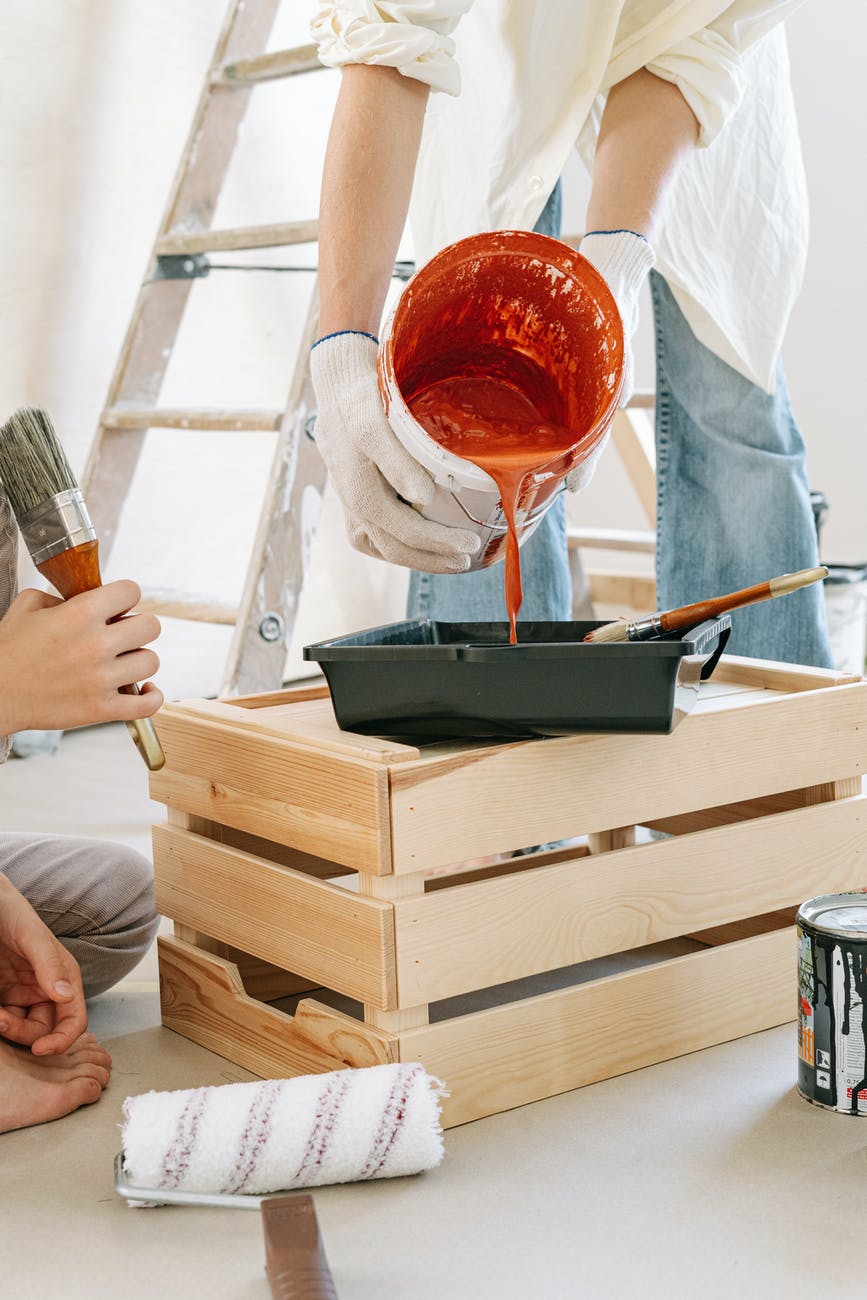Painting is an easy DIY project for most homeowners to undertake themselves, but achieving professional-looking results takes planning. Here are five helpful hints and strategies to make sure your next painting project goes smoothly.
Before painting, make sure that your brushes have been properly sterilized by running them through a microwave for 10 seconds to help avoid the spread of mold and mildew. This will help ensure a more enjoyable painting experience for everyone involved!
1. Start at the Top
Painting can be an enjoyable and therapeutic activity that you can share with family or friends, whether alone or together. But painting requires dedication, responsibility and careful execution in order to be completed successfully – this article shares essential tips that will help you do a superior job of painting.
Start at the top. Doing this will prevent paint bleeds and ensure an even finish, plus help you stick to instructions by eliminating redoing sections later. Find out the best painter Melbourne.
Low-stick tape such as blue painters’ tape is recommended over masking tape as its adhesive can easily be removed without pulling off existing primer or paint layers. Also, be sure to take precautions such as taking down light switch covers before starting work; these will protect furniture items, curtains, and floors from spills or splashes during painting projects.
2. Don’t Mix Your Colors
One of the biggest mistakes a painter can make is overmixing colors, leading to dull or murky shades that compromise its original integrity.
Leave some variations in your paint to achieve a more natural appearance; this is particularly important with acrylics that do not mix smoothly, or from different manufacturers that utilize different chemical formulas in their paints.
If you need help mixing colors properly, keep a color mixing chart handy as a source of reference. It will show which hues belong to the primary, secondary, and tertiary categories.
Some artists use color wheels when painting, as this tool provides essential insight into basic color theory and assists with mixing the appropriate hues – creating more confident artists overall.
3. Keep a Palette Knife
Palette knives are essential tools for any painter as they provide numerous uses and techniques, from impasto (thick paint application) to creating different textures like short peaks or furrows.
Palette knives can help to blur the boundaries between colors, creating ambiguity and encouraging viewers’ eyes to travel freely across a painting. Impressionists frequently employ this technique.
Palette knives can be used to scrape away wet paint in an effect known as “sgraffito.” This reveals completely dry underlying layers, creating an interesting contrast to your painting. Additionally, their tip can also create fine lines such as those found on tree branches; their round tips can dab small dots of colour that make great sky elements or larger areas of light in your painting.
4. Keep a Cup of Water
As a painter, one of the worst outcomes you could be confronted with as part of a project is having to deal with an unsightly mixture of colors you selected for use on it. Acrylic pour painters frequently encounter this issue for various reasons; one reason could include insufficient preparation before starting; alternatively it could simply have happened through bad mixing processes that led to unfavorable outcomes resulting from inaccurate mixing techniques used in selecting appropriate paint colors;
Some artists prefer to arrange their paints so as to separate those that stain easily (such as rose and scarlet), while others opt for keeping painting supplies in condiment dishes in order to rewet their paints daily through spraying with water and leaving to soak while doing other tasks around their studio.
At any rate, it’s a good idea to keep a cup of clean water handy in order to quickly swish brushes between strokes and rinse them as necessary. Furthermore, this provides an effective means of keeping your work area dry–particularly if using watercolors or acrylics that may quickly disintegrate when exposed to sunlight or fluorescent lighting.
